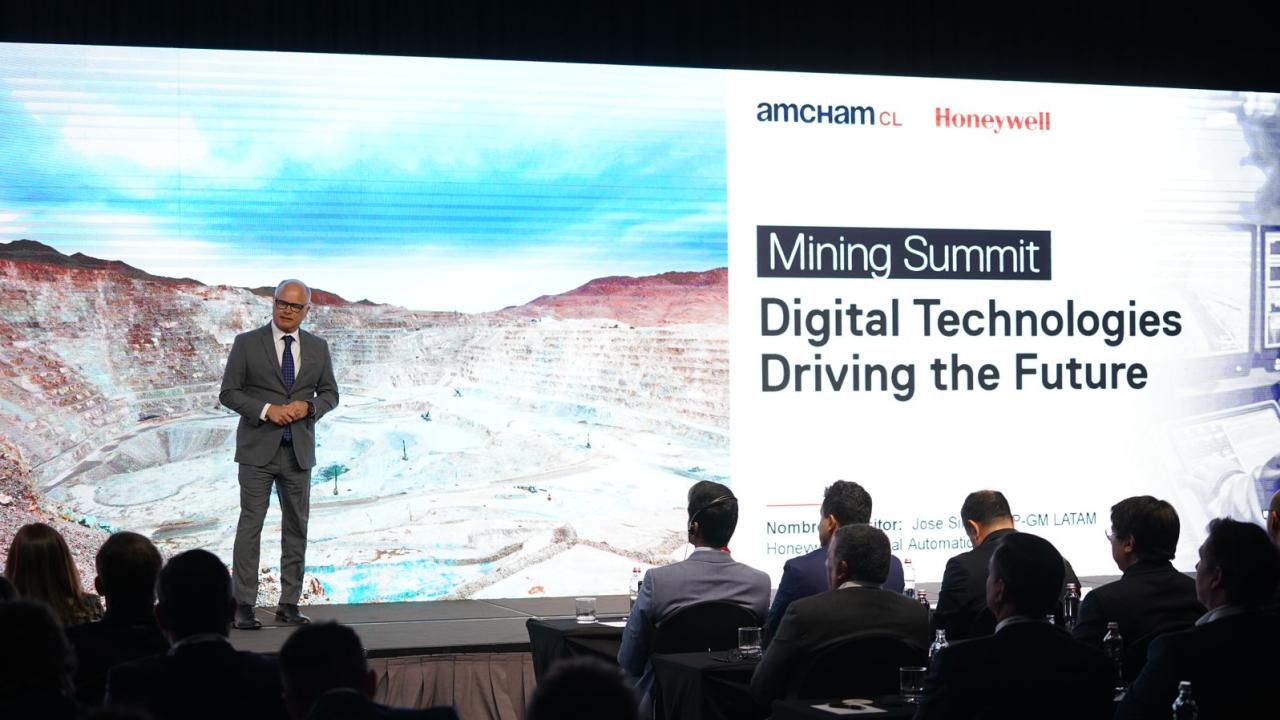
Mining, the economic backbone of countries such as Chile and Peru, is undergoing a radical transformation by adopting technologies such as automation and AI. And the US firm is capitalizing on this change.
Latin America is embarking on a journey of digital updating that firms such as the American Honeywell are taking advantage of.
Considered the economic backbone of countries such as Chile and Peru, two major copper producers on the continent, but also Colombia, Ecuador and Panama, this sector is undergoing a radical transformation, where the incorporation of cutting-edge technologies is what largely ensures the success of an operation.
"Technology has helped mining companies become much more efficient than they were before," José Simón, vice president and general manager for Honeywell Industrial Automation in Latin America, told AméricaEconomía.
This efficiency is not a luxury, but a pressing need in situations like Chile, where the mineral grade has dropped by almost half in 50 years.
Still, the mining outlook for the world's largest copper producer looks promising.
According to Cochilco's Copper Market Trends Report, copper price projections continue to rise for 2024 and 2025, while Chilean production is expected to grow: its mining investment portfolio reaches US$65,712 million for the period 2023-2032.
While the industry as a whole faces a landscape of opportunities, unprecedented challenges await.
For example, a shortage of skilled labour threatens to slow this momentum. The Global Business Report 2024 on mining in Chile, launched in August this year, estimates that 34,000 skilled workers will be needed to meet the demand generated by the energy transition, at a time when interest in traditional mining careers is declining.
This is where Honeywell's business and automation vision becomes relevant to this economic sector.
"Automation is the cornerstone of modern operational efficiency. We help companies reduce downtime, minimize human errors and increase productivity, setting a new standard in industrial process management," says Simon.
The impact of these innovations is also reflected positively in the company's numbers. Honeywell reported sales growth of 5% in the second quarter of 2024, with organic sales up 4%. The company deployed US$6.4 billion in acquisitions, dividends, share repurchases and capital expenditures, including the acquisition of automation firm Access Solutions in June of this year, for almost US$5 billion.
"Honeywell delivered a strong second quarter, once again meeting or exceeding expectations across all metrics while maneuvering through a dynamic operating environment," Honeywell President and CEO Vimal Kapur told reporters in late July.
The company's strategy goes beyond simply selling technology. Honeywell's position is to affirm that it is redesigning the profile of the 21st century mining worker. The initial resistance to change, natural in a century-old industry, is giving way to a new generation of professionals who see automation as an ally, not a threat.
"Digitization and automation have elevated the work of employees. It makes them more strategic. Automation takes care of the details, but employees who have experience, I see it as raising the experience in a more strategic way," explains Simón.
This statement is materialized in solutions such as remote support and operation, which allow mines to be managed from the comfort of offices in Santiago, far from the inclemency of the Atacama Desert in the north of the country.
This transformation is not without its challenges. Remote operation, while promising, still faces technical and cultural hurdles. The idea of an “autonomous mine” remains a distant horizon, but it is the direction the industry is heading. Honeywell, with its experience in sectors such as aviation and energy, is well positioned to lead this transition.
On the other hand, artificial intelligence, far from being a passing fad, has become an indispensable tool for predicting failures in critical machinery, revolutionizing maintenance schemes and optimizing operating times.
However, the initial investment in this technology can be prohibitive for smaller operations, and the digital divide between large corporations and midsize producers threatens to create a two-speed market.
In addition, the growing reliance on automated systems poses new risks in terms of cybersecurity and operational resilience.
“You're talking about a business that has been around for many years and the employees naturally had a lot of experience doing things their way, without much documentation, with little standardisation, with little automation. Then came artificial intelligence, more modern control systems and that created a bit of resistance to change,” Simon reflects.
All these experiences were compiled at the recent Mining Summit: Digital Technologies Driving the Future event, held in Santiago. There, Honeywell showcased its experiences and success stories to mining industry experts and representatives from the public and private sectors, where they discussed the innovations that are redefining the future of mining through digital technologies and advanced automation.
“Workers first adapted, they realised that automation improves their work, but it doesn’t replace them. And on top of that, as they retire and new workers come in who are more accustomed to automation, computers and everything, well, naturally it’s easier. But the initial resistance is probably one of the biggest challenges there is,” Simon concludes.









